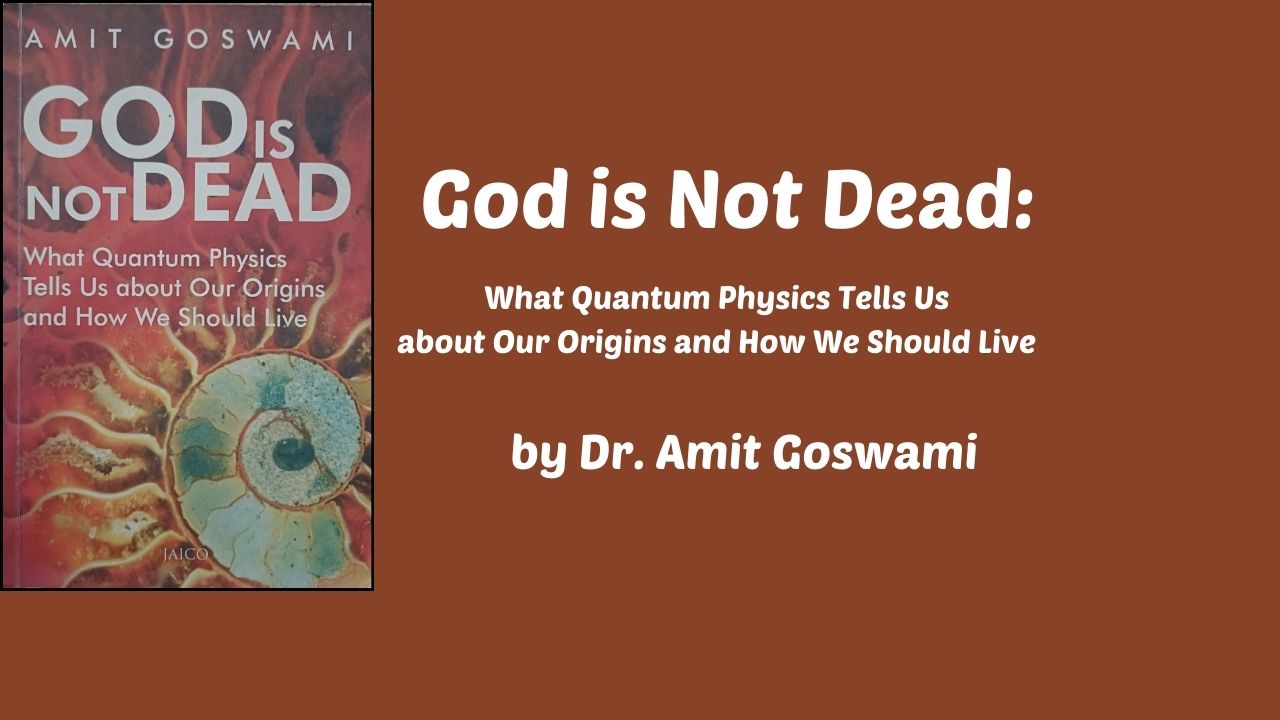
God is Not Dead#
“God is Not Dead: What Quantum Physics Tells Us about Our Origins and How We Should Live” by Amit Goswami was first published in 2008.
Amit Goswami is a theoretical physicist and a prominent figure in the field of quantum mechanics and consciousness studies. Born in India, he earned his Ph.D. in physics from the University of Calcutta and later became a professor at the University of Oregon, where he taught physics for over three decades. Goswami is best known for his work on the concept of quantum consciousness, which posits that consciousness is a fundamental aspect of the universe and plays a central role in the manifestation of reality. He is a prolific author and speaker, blending scientific knowledge with spiritual insights, and has written several books, including “The Self-Aware Universe” and “The Quantum Doctor”. His work has been influential in the development of a new scientific paradigm that integrates science, philosophy, and spirituality.
Here is the list of key ideas from this book are as below. Whether you are atheist or theist you should attempt to read this book in your life time, it will change your perspective about the existence. I read this book around 2015 and today found it again before my eyes, so thought to summarise.
Central Thesis: Amit Goswami argues that the principles of quantum physics provide evidence for the existence of a conscious universe, suggesting that consciousness is the ground of all being, rather than matter or energy.
Critique of Materialism: The book challenges the materialistic worldview, which posits that matter is the primary substance of the universe. Goswami argues that this view cannot fully explain the nature of reality or consciousness.
Quantum Consciousness: Goswami posits that consciousness is a fundamental property of the universe, not just a byproduct of physical processes in the brain. He introduces the idea of a “quantum consciousness” that influences the material world.
Observer Effect: The book discusses the observer effect in quantum mechanics, where the act of observation affects the outcome of an experiment. Goswami argues that this points to the active role of consciousness in shaping reality.
Non-locality: Goswami explains the concept of non-locality, where particles can be instantaneously connected across distances. He uses this to suggest that consciousness is non-local and interconnected, transcending space and time.
Quantum Measurement Problem: The book addresses the quantum measurement problem, questioning how and why quantum possibilities collapse into actual events. Goswami suggests that this collapse is influenced by consciousness.
Monistic Idealism: The author advocates for a philosophical viewpoint known as monistic idealism, which asserts that consciousness is the fundamental substance of the universe, and the material world is a manifestation of this consciousness.
Reincarnation and Karma: He discusses concepts of reincarnation and karma, suggesting that consciousness persists beyond physical death and that our actions have consequences that transcend lifetimes.
God and Quantum Physics: The book suggests that God can be understood as the universal consciousness that underlies all existence, and that this interpretation is consistent with findings in quantum physics.
Integration of Science and Spirituality: Goswami calls for a new paradigm that integrates science and spirituality, where both are seen as complementary ways of understanding the universe.
Creative Evolution: He proposes a model of evolution driven not just by random mutations and natural selection but by the creative input of consciousness.
Ethical Implications: Goswami explores the ethical implications of a conscious universe, suggesting that recognizing our interconnectedness leads to a more compassionate and ethical way of living.
Mind-Body Problem: The book offers insights into the mind-body problem, proposing that mind and matter are not separate but are interconnected through consciousness.
Role of Intention: Goswami emphasizes the power of intention and belief in shaping reality, suggesting that our thoughts and intentions have real, measurable effects on the world around us.
Paranormal Phenomena: The book discusses paranormal phenomena, such as telepathy and psychic experiences, suggesting they may be understood through the lens of quantum consciousness.
Cosmic Purpose: Goswami argues that the universe has a purpose and that humans, as conscious beings, play a significant role in realizing this purpose.
Spiritual Practice: The author advocates for spiritual practices, such as meditation and prayer, as means to connect with the universal consciousness and understand our place in the cosmos.
Consciousness-Based Medicine: Goswami touches on the implications of a conscious universe for medicine, suggesting that healing can occur through the alignment of consciousness and intention.
Personal Transformation: The book encourages readers to engage in personal transformation by recognizing their own divine nature and striving for higher states of consciousness.
Vision for the Future: Goswami envisions a future where science and spirituality are integrated, leading to a more enlightened and harmonious world.


Comments: